In recent years, wild boars have become more and more widely recognized as a familiar pest even in urban areas. Before the damage becomes serious, it is necessary to take measures centered on prevention and extermination, but what specific steps should be taken?
This time, we will explain the important points and specific control and extermination methods when starting wild boar countermeasures.
Preliminary knowledge of wild boar control and extermination -Current status of damage caused by wild boars-
According to data surveyed by the Ministry of Agriculture, Forestry and Fisheries, the annual amount of damage to crops caused by wild birds and animals has reached approximately 15.8 billion yen (FY 2018).
Full-fledged measures against wild birds and beasts led by local governments have been effective, and although this number is on a downward trend year by year, the scale of damage is still enormous, and continuous measures are important.
Damage to crops by wild boars is about 4.7 billion yen annually
In particular, the damage to crops caused by wild boars is serious. Annual damage is about 4.7 billion yen. This is the second largest amount of damage after deer, which is about 5.4 billion yen, and accounts for more than 30% of the total.

Source: Ministry of Agriculture, Forestry and Fisheries website
In many cases, the crops grown with great care are ruined overnight before the harvest, and there are many serious cases where the motivation for farming is lost.
Click here for the wild boar countermeasure product page >>.

Three basic points for wild boar control and extermination
Measures against wild boar damage are roughly divided into "prevention" and "extermination."
Prevention is the prevention and removal of damage. Extermination means driving away or killing and removing harmful things. In order to deal with wild boars, it is important to promote both of these two things at the same time.
Now, let's take a closer look at the three basic points of prevention and extermination.
1. System maintenance
The first is to improve the system.
Establishing a system means increasing the number of members who can think of the damage caused by wild boars as their own problem. Wildlife countermeasures are more effective when working in groups than when working alone. With individual measures, there is a risk that the wild boars will move and spread the damage, so let's increase the number of "friends" who work on the measures as much as possible.
First of all, it is possible to create a group with a small number of people.
2. Environmental maintenance
The second is the improvement of the environment.
Environmental maintenance is the improvement of the environment so as not to attract wild boars. Specifically, it is important to prevent the feeding of vermin. Beasts come to human villages in search of food. Even if you don't intend to, if the environment is such that animals can find food in the settlement, it will easily lead to damage.
First of all, it is important to eliminate the environment in which animals are unknowingly fed with food.
for example,
- Leftovers such as fly flies (2nd ear) after harvesting, crop residue, leftover food, etc.
- There are unattended fruit trees (such as unharvested chestnuts and persimmons).
- There are many abandoned farmlands that are not managed (there are crops to feed on, and there are environments where beasts can safely approach human settlements while hiding themselves).
Examples include:
In addition, if crops that cannot be shipped to the market are left as they are, they will become food for wild boars. Once a boar learns the taste of a crop, it may recognize it as a feeding ground.
In order not to make the wild boars remember that there is delicious food here, it is important to remove as much food as possible.
In addition to eliminating food, it is also important not to create an environment that is comfortable for wild boars to live in. Wild boars can easily hide or settle in uncultivated land, so keep the grass clean.
3. control and extermination
The third is prevention and extermination.
When it comes to wild boar countermeasures, the first thing that comes to mind for many people is probably this control and extermination. As a control measure, it is common to keep wild boars away by maintaining fences. In addition, extermination will be carried out through harmful extermination, hunting, etc.
★ Reference article : Types of animal damage and countermeasures
Concrete methods of wild boar control and extermination
For the actual boar control and extermination method, it is effective to follow the steps from 1 to 3 above. Most of the costs for 1 and 2 above are non-monetary costs such as labor and time. From here, we will explain the specific methods of 3 "Prevention and extermination".
1. electric fence
Protective fences are the most common control measure, and are the last line of defense to stop wild boar damage at the water's edge. In recent years, electric fences have been widely used as a countermeasure against wild boars.
Electric fence structure and purpose
Electric fences for wild boar countermeasures consist of electric wires, posts, insulators, clips, power supplies, grounds, etc., and are not structurally strong.
The aim is to prevent wild boars from approaching fences by learning the fear of being surprised by electric shocks and touching electric fences, rather than physically controlling them with strong fences. Unlike physical protective fences such as wire mesh and fences, electric fences function as psychological protection against the trauma of electric shocks.
How to install an electric fence
First, erect poles at intervals of 3 to 4 meters and stretch electric wires. The most commonly used wire material is the poly wire type. It has a structure in which soft polyethylene and metal wires are woven together, and when an animal touches the electricity flowing through this metal wire, it will receive a shock.
In the case of an electric fence for wild boars, it is basic to set the wires in two to three stages. The height and spacing of the wires differ depending on the target animal, but in the case of wild boars, it is important to devise ways to easily hit the tip of the snout.
Since wild boars use their snouts to find things, the bottom wire should be 15 to 20 cm above the ground so that it is exactly where they are. The boar does not feel the shock even if the electric shock is given from the outside of the fur, so adjust it while imagining that the electric wire touches the sensitive nose.
In addition, one or two electric wires are put on it at intervals of 20 to 30 cm, and the top line is about 40 to 60 cm. *We recommend setting the electric fence wire on the 1st tier to a low level, as baby boars (Uribo) will appear in the spring. Assemble and connect electric wires, poles, and power supplies, and if necessary, ground them in the ground.
Dry soil will cause poor grounding, so it is better to choose a moist place and bury the ground as deeply as possible. In addition, after installation is complete, the power supply should be on for 24 hours as a rule, and there should be as little time without power supply as possible.
important point
Again, electric fences are not strong in structure, so electric shocks do not work effectively, and there are many cases where wild boars lift the fence with their noses or dig it up to allow entry.
There is also a case where a wild boar that received an electric shock ran towards the fence, not only allowing entry but also destroying the electric fence. In order to avoid unintended electric shock risks other than wild boars, it is important not to stop after installation, but to ensure proper maintenance.
*For protective fences other than electric fences, please refer to this article .
2. extermination
Excess pests should also be exterminated. By extermination, the damage is visibly reduced.
As for extermination methods, wild boars are mostly captured and exterminated by tying traps, box traps, enclosure traps, etc.
A trapping license is required to capture wild animals with traps.
★ Reference article: The first step to catching pests ~ Necessary licenses and permits
Difference between Box Trap and Tie Trap
Box traps and box traps are typical traps used to exterminate wild boars.
Box traps are box-shaped traps made of cages, etc. When prey enters and the trigger is activated, the doorway closes to trap the prey. A trap that has more than half of the ceiling surface open is treated as an enclosure trap, not a box trap.
Kukuri Trap is a mechanism in which when a wild boar, deer, or other animal steps into the place where it is set up, the force of the push spring activates the trap and captures it.
Box traps and tie traps are explained in detail in the following articles, so please refer to them.
[Reference article]
・Tips for increasing the results of tying traps
・Wild boar countermeasures - types of traps
3. Repellent
A simple way to keep wild boars away from fields is to use repellents. It is a liquid containing an odor that boars dislike, and it is intended to keep wild boars away by spraying it around the perimeter of areas that should not be damaged. Compared to other measures, it is characterized by being easy to introduce and having less impact on the environment.
There are many types of repellents, including various peppers, herbs, and wolf pee . For example, Wolf Pee uses the urine of wolves, the natural enemy of wild boars. The wolf's "marking" habit, in which wolves use their urine and body odor to mark their territories, is applied to countermeasures against wild boars.
Points when using
As a point when using repellents, the effect can be enhanced by using them together with physical measures. Repellents do not "guarantee absolute effectiveness" as a countermeasure against wild boars.
This is because wild boars become accustomed to the smell and become less vigilant. Therefore, by using physical box traps and tying traps together with repellents, the effect can be further enhanced. Fine adjustment of the installation height is also a point to enhance the effect.
If you use it as a countermeasure against wild boars, about 40 cm will be the height of the nose. If you can see the footprints of the uribou, let's set it a little lower at a height of about 20 cm. Also, after rain or when the liquid evaporates and decreases, the smell will be diluted and the effect will be reduced. Let's work on maintenance, such as rain protection and regular replenishment.
Four. Countermeasures using sound
A countermeasure using sound is to take advantage of the wild boar's habit of escaping in response to sound. For example, the threatening device emits a threatening sound when it detects a wild boar with an optical sensor. Surprised by this sound, wild boars run away to prevent crop damage. In addition to this, there is also a type that randomly generates sounds and a method of installing bells.It is important not to let them get used to the sound
As with repellents, noise-based countermeasures become less effective when wild boars get used to them. Let's increase the effect by working in combination with physical measures.
Click here for sound prevention products>>
Five. Other wild boar measures
In addition to the above measures, new measures have recently been taken to keep wild boars at bay. Some of them have even begun to try things that were not conventional measures against wild boars, such as using robots and ultrasonic waves.
[Reference article]
New measures against wild boars.
summary
Even if the above control and extermination measures are implemented, there are cases where they were effective in the beginning, but were rendered ineffective by the boar's ability to learn.
It is important not only to thoroughly understand the damage situation and location, and to check the effectiveness, but also to understand the route and cause of the wild boar's invasion and analyze the wild boar's behavior when the control measures are breached. Become.
Countermeasures against animal damage do not happen overnight, but if you take appropriate measures, you can definitely reduce the damage.

 箱罠
箱罠
 くくり罠
くくり罠
 パーツ類
パーツ類
 電気柵
電気柵
 自作キット
自作キット
 防獣グッズ
防獣グッズ
 監視カメラ
監視カメラ


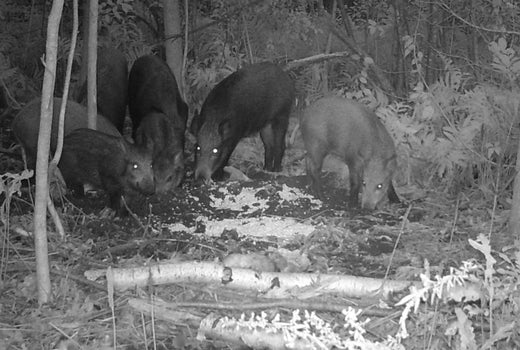
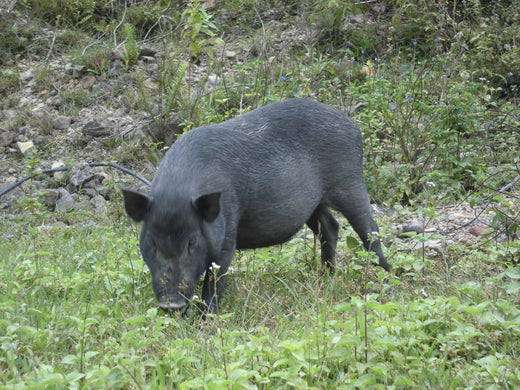
![Fare Asahi Shiki Box Trap Big Size [Double Door]](http://inohoi.jp/cdn/shop/products/20180504_5c53af_300x300_crop_center.progressive.jpg?v=1597991101)
![Fare Asahi Shiki Box Trap Big Size [Single Door]](http://inohoi.jp/cdn/shop/products/20180506_c693cd_e969a0f5-abac-49ee-8f2b-6de0f385e3fd_300x300_crop_center.progressive.jpg?v=1597991123)
![Fare Asahishiki box trap medium size [single door] wire mesh specification](http://inohoi.jp/cdn/shop/files/main_300x300_crop_center.progressive.png.jpg?v=1720764665)
![Fare Asahi Shiki Box Trap Medium Size [Single Door] Deep Type](http://inohoi.jp/cdn/shop/files/f9d83dbb4ed93f76265b8cd23c07b474_300x300_crop_center.progressive.jpg?v=1726117508)
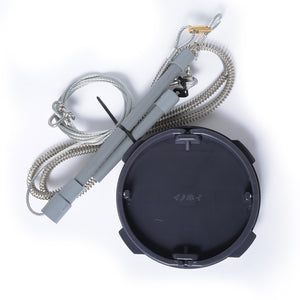
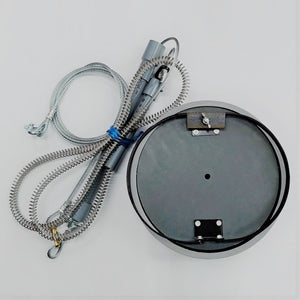
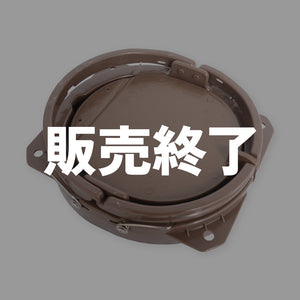
 box trap
box trap
 tying trap
tying trap
 enclosure trap
enclosure trap
 Prevention and avoidance goods
Prevention and avoidance goods
 electric fence
electric fence
 trap surveillance camera
trap surveillance camera
 transportation goods
transportation goods
 Trap detection sensor
Trap detection sensor
 hunting supplies
hunting supplies
 game cookware
game cookware
 hunting books
hunting books
 Anti-bird goods
Anti-bird goods
 Agricultural materials/machinery
Agricultural materials/machinery
 Gibier
Gibier
 boar
boar
 deer
deer
 Kyon
Kyon
 monkey
monkey
 raccoon
raccoon
 Badger
Badger
 palm civet
palm civet
 raccoon dog
raccoon dog
 nutria
nutria
 mouse or rat
mouse or rat
 Mole
Mole
 bear
bear
 pigeon
pigeon
 Crow
Crow







